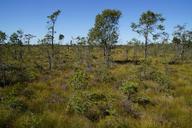Introduction
As the climate continues to change http://collectivethoughts994.raidersfanteamshop.com/practical-humidity-control-solutions-every-homeowner-should-know-about and temperatures soar, finding effective ways to cool our environments has become increasingly important. One of the latest innovations in the realm of cooling technology is the hoseless air conditioner. This article will provide a comprehensive overview of hoseless air conditioners, exploring their benefits, functionality, and how they stand out from traditional cooling methods. Throughout this discussion, we will also address common queries related to air quality and efficiency, ensuring that you are well-informed on all aspects of maximizing comfort in your living spaces.
Maximizing Efficiency with Hoseless Air Conditioners Explained
The concept of hoseless air conditioners may seem foreign to many, but it embodies a significant leap in HVAC technology. Unlike traditional air conditioning systems that rely on cumbersome hoses and ductwork, hoseless units offer an efficient alternative that can be installed almost anywhere. With their sleek designs and compact nature, these units fit seamlessly into both residential and commercial settings.
What Is a Hoseless Air Conditioner?
A hoseless air conditioner is a type of portable cooling device that does not require the installation of ducts or external hoses for operation. Instead, it uses advanced technologies such as evaporative cooling or thermoelectric systems to regulate indoor temperatures effectively. These units are designed for ease-of-use and mobility, making them suitable for various applications.
How Do Hoseless Air Conditioners Work?
Hoseless air conditioners operate using principles similar to those found in conventional AC units but without the need for extensive installation. They utilize either evaporative cooling processes or solid-state technologies:
- Evaporative Cooling: This method relies on water evaporation to cool air. The unit draws in warm air and passes it over water-saturated pads, causing the moisture to evaporate and lower the temperature. Thermoelectric Systems: These systems employ thermoelectric modules that create a temperature difference when electricity is applied. The result is efficient heat transfer without mechanical components like compressors.
Advantages of Using Hoseless Air Conditioners
Portability: One of the most significant advantages is their portability. Users can easily move these units from room to room.
No Installation Required: Traditional air conditioning systems often require extensive installation work; hoseless units can be set up within minutes.
Energy Efficiency: Many hoseless models consume less energy than standard ACs, contributing to lower utility bills.
Space-Saving Design: Their compact size allows them to fit into smaller spaces where traditional systems may not be feasible.
Environmentally Friendly Options: Some hoseless air conditioners utilize eco-friendly refrigerants or operate on renewable energy sources.
Key Features of Hoseless Air Conditioners
Energy Efficiency Ratings
When choosing a hoseless air conditioner, it's essential to consider its energy efficiency rating (EER). Higher EER ratings indicate better performance while consuming less energy, thus aligning with environmentally conscious practices.
Noise Levels
Another feature worth considering is noise levels during operation. Many modern models are designed to operate quietly compared to traditional window units or central AC systems.

User-Friendly Controls
Look for models equipped with intuitive controls—some even come with remote access via smartphone apps—allowing users to adjust settings conveniently.
Filter Maintenance
Regular maintenance ensures optimal performance; choose models with easy-to-clean filters or indicators notifying when cleaning is required.

Comparing Portable Air Conditioners vs Hoseless Models
While both portable air conditioners and hoseless variants serve similar purposes—cooling indoor spaces—they differ significantly in design and functionality.
1. Mobility & Installation
- Portable ACs often come with exhaust hoses needing venting through windows. Hoseless models eliminate this hassle entirely by functioning independently without additional ventilation methods.
2. Cooling Capacity
- Portable options usually have higher BTU ratings for larger spaces. Conversely, hoseless units tend to focus on smaller areas but do so more efficiently due to innovative technologies.
Common Misconceptions About Hoseless Air Conditioners
Despite their growing popularity, some misconceptions persist regarding hoseless air conditioners:
1. Are They Less Effective Than Traditional ACs?
Not necessarily! While they may not cool large spaces as quickly as high-capacity traditional systems, they excel in efficiency within confined areas—making them perfect for personal use in bedrooms or offices.
2. Do They Require More Maintenance?
Actually, maintenance requirements are often simpler than those associated with traditional HVAC systems which necessitate complex servicing every season!
Best Practices for Using Your Hoseless Air Conditioner Effectively
To maximize efficiency when using your hoseless unit:
Position the unit away from direct sunlight. Keep doors and windows closed while operating. Regularly clean filters according to manufacturer recommendations. Use fans alongside your unit for improved airflow distribution throughout rooms.Understanding Humidity Control When Using Air Conditioning Systems
Humidity plays a crucial role in comfort levels at home; therefore understanding how different devices interact with humidity becomes imperative!
1. Can I Use a Dehumidifier Alongside My Hoseless Air Conditioner?
Yes! In fact, pairing these devices helps maintain optimal humidity levels while enhancing overall cooling efficacy—especially during hot summer months when humidity can spike dramatically!
2. Should I Close The Door When Using A Dehumidifier?
Generally speaking yes! Closing doors prevents humid outdoor air from entering your space thereby maximizing dehumidification efforts within enclosed areas like basements or laundry rooms!
FAQ Section
Here are some frequently asked questions about hoseless air conditioners:
1. What happens if my hoseless AC doesn’t cool effectively?
If your unit fails to cool properly check:
- Filter cleanliness Placement away from obstructions Temperature settings against environmental conditions
2. How often should I replace filters?
Most manufacturers recommend replacing filters every 3 months—however frequent usage may necessitate more regular changes!
3. Can I use a hose with my hoseless system?
No! Utilizing hoses negates the benefits provided by its unique design intended solely for independent operations without additional attachments!
4.Are there any safety precautions I should take?
Always ensure electrical connections remain dry & avoid exposing electrical components directly into water sources during cleaning processes!
5.Can children operate these machines safely?
While generally user-friendly supervision remains advisable particularly regarding young children who might inadvertently tamper with settings unintentionally leading potential hazards!
6.How long do these units typically last?
With regular upkeep & maintenance longevity averages between 5–10 years depending upon usage patterns & model quality standards adhered too upon purchase!
Conclusion
In summary, maximizing efficiency with hoseless air conditioners offers numerous advantages over traditional cooling solutions including portability convenience reduced energy consumption enhanced comfort across diverse environments! As global temperatures continue rising investing wisely into innovative solutions like these ensures optimal climate control year-round while minimizing ecological footprints associated excessive energy use! So why wait? Explore options available today experience firsthand benefits derived utilizing state-of-the-art technology revolutionizing indoor climates forevermore!